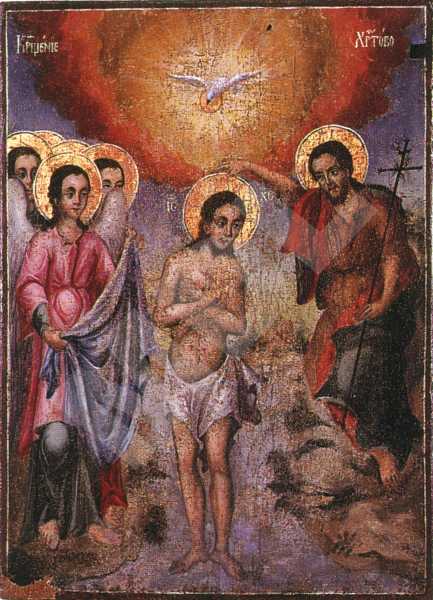The Baptism of Jesus Christ
Type:
Icon
Period:
From
the end of the
18 century
to
the beginning of the
19 century
Toma Vishanov-Molera, born around 1750, painter of icons and murals, founder of the Bansko school of art. He grew up in the family of the clergyman Vishan. Around 1765 he went to Vienna, where he studied painting. It is not known who were his teachers there or when he returned to Bansko. His fellow villagers called him the Moler, Molera(from German Maler ‘painter’), whence the entire family's surname. Under the influence of the European 18th century art Toma Vishanov painted his works in a new manner, unknown until then in Orthodox art. The figures are realistic, vivid, expressive. Toma Vishanov is an innovator in the early period of Bulgarian Renaissance. His ideas on art were not understood and at first were rejected by his contemporaries. His work has not been studied extensively. He died after 1811 in Bansko.
Dimmensions (cm):
30.5
/ 22.5
/ 2
Location
Country: Bulgaria
Province: Kustendil
Town: Boboshevo
Church: The Assumption of the Virgin
Source
Country: Bulgaria
Province: Kustendil
Town: Boboshevo
Church: The Assumption of the Virgin
Description
Portrayed in the center of the composition in full length is Christ, standing, with his arms crossed on the chest and slightly bent to the left head, looking sidewards. On his left-hand side is Saint John the Baptist, his body slightly bent. With his right hand he is making the sign of the cross above Christ, and in his left hand is holding a cross with a long vertical beam. Painted on Christ's right-hand side is an archangel, holding in his hands a white mantle, prepared to cover the body of Christ after his baptism. Painted behind him are two more heads of figures and, using the method of the "isocephaly", more figures behind them. Above Christ is God - the Holy Spirit in the image of a dove, surrounded by a radiance and clouds.
Iconographical technique: Oil
The aureoles are gilded with gold-leaf. The figures are painted with oil paints with the "wet in wet" technique, with brown-greenish shades and a whitened ochre paint in the lighted parts. The transitions are gentle, gradating smoothly from light to shade, lending a certain tactile value to the painted figures. The varnish lcover is a thin one, with a smooth texture.
Base material: Wood
The icon's base is a hand-made oak panel, a thinly laid ground coat of plaster, about 0,3 mm thick.
State, restoration traces and comments
No prior restoration has been detected.


